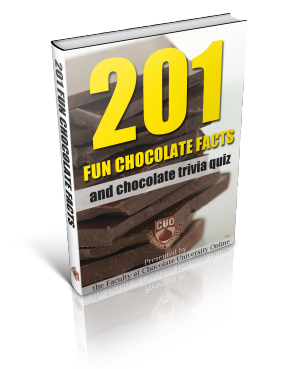Types of Chocolate: Understanding the Differences
Sometimes baking with chocolate can cause a lot of confusion. There are so many different types of chocolate available today that it can often be a hassle to know which type of chocolate to use in which situation. This article will help you to understand the different types of chocolate, and when and when not to use them.
1. The Basics
Chocolate first comes from yellow pods that hang from the cocoa tree. When the time is right and the pods are ripe, they are gathered and opened to reveal about 40 cocoa beans within each pod. These cocoa beans are then dried in the sun and allowed to ferment. This helps to develop the rich flavour of chocolate. After that, they are washed again, dried, cured, roasted, and eventually crushed to remove the shells of the bean. This gives us the chocolate nibs, which are further roasted and crushed to obtain a thick liquidy paste known as chocolate liquor or cocoa mass. This is the essence from which all chocolate is made.
Cocoa mass is generally made up of 53% cocoa butter and 47% cocoa solids. The cocoa mass may be further processed to extract these two components for the making of chocolate. The different types of chocolate all vary based on the amount of cocoa butter, cocoa mass, sugar and milk solids present.
2. Unsweetened Chocolate
Unsweetened chocolate is also known as baking chocolate because it is very often used in baking. This is chocolate in the purest form of solid cocoa mass. No sugar or milk solids have been added to it at all, and it is very bitter in taste. It is actually not suitable for eating by itself, and is used together with sugar for baking pastries such as cakes or brownies.
3. Dark Chocolate
Dark chocolate generally refers to chocolate made with cocoa mass and added sugar, cocoa butter, and sometimes emulsifiers such as lecithin. This chocolate does not have any added milk solids. It includes varieties such as the bittersweet chocolate and the semisweet chocolate. Dark chocolate in Europe more commonly refers to the bittersweet variety, while in America it is usually meant to refer to the semisweet variety. At least 35% of cocoa mass is present in the chocolate.
Semisweet chocolate is taken to be generally sweeter than bittersweet chocolate, but there are no absolute rules governing this and it will vary based on the brand. Both types of chocolate may be substituted for each other in recipes.
4. Sweet Chocolate
Sweet chocolate is required to have at least 15% of cocoa mass, and is sweeter than semisweet chocolate. It contains also additional amounts of sugar, milk solids, and sometimes emulsifiers as well.
5. Milk chocolate
Milk chocolate differs from dark chocolate in that it contains milk solids. It has a lighter colour and milder, sweeter taste. The milk solids present in the chocolate make it less suitable for baking and it should not be substituted for dark chocolate in baked pastries, as the milk solids have a tendency for burning. Compared to dark chocolate, it is also slightly more difficult to temper.
6. White chocolate
White chocolate contains no cocoa mass or cocoa solids. The ingredients mainly present are sugar and cocoa butter. However, sometimes the cocoa butter is replaced with vegetable oil, giving a lower quality chocolate. It is sweeter than the milk and dark chocolates, and also much more difficult to temper.
7. Couverture
Couverture refers to chocolate that contains at least 32% of cocoa butter, thus making it a very fluidly smooth chocolate with a glossy texture. The high amount of cocoa butter also gives a wonderful melt-in-your-mouth experience. Couverture is much more preferred among chefs and chocolatiers.
8. Gianduja
Gianduja is a European style of chocolate that is made by combining ground roasted almonds and milk chocolate. It is used for a variety of purposes and is a very soft chocolate.
9. Coating Chocolate or Imitation Chocolate
Coating chocolate or imitation chocolate is chocolate with the cocoa butter replaced by vegetable oil. In general, its quality is not as good as real chocolate, but requires no tempering and is good for coating candy. It does not melt easily and so is useful for many purposes.
10. Chocolate Chips
Chocolate chips are small, tiny drop-shaped chocolate piece that are popularly used for making cookies and muffins. They can be bought in a variety of flavours and make great toppings.
11. Chocolate Melting Wafers
Chocolate melting wafers, such as pistoles, buttons, ribbons, and calets, are round or oval discs of chocolate that are very conveniently used for melting. The advantage of using them is that you don’t have to take the trouble of chopping up the chocolate for melting.
12. Cocoa powder
Cocoa powder can be divided into natural cocoa powder and Dutch-processed cocoa powder. Natural cocoa powder is simply the brown powder that is left behind after you remove cocoa butter from the cocoa beans. This powder does not contain additional sweeteners, and is slightly acidic. It is light-brown and has a strong taste.
Dutch-processed cocoa powder is natural cocoa powder that has been treated with an alkaline solution. The alkaline solution neutralizes the acidity of the cocoa powder, giving it a milder flavour. It is also darker in color and does not clump together as easily.
Written by artyoung
Find More Chocolate Making Articles
Categories: chocolate articles Tags: CHOCOLATE, Differences, Types, Understanding




